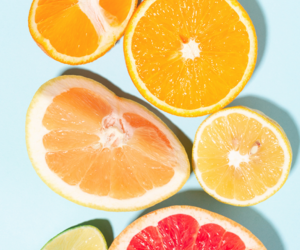By Shannon Shepp, Executive Director of the Florida Department of Citrus
As we close out a year unlike any other, I am optimistic for what’s yet to come this Florida Citrus season. The Department’s e-commerce campaign to drive sales of Florida Orange Juice is nearing the halfway mark and continues to deliver strong results. This week we reached 150 million impressions and $4.2 million in attributed sales of 100% OJ with a ROAS of $5.45. Additionally, we launched a new partnership with Kroger that has exceeded expectations with $228,000 in attributed sales in its first week.
While it is a joy to be able to deliver these directly attributable at retail results to the industry week after week, we also know there’s more to the story. That’s why we engage independent researchers, such as Dr. Lisa House and others at the University of Florida, to estimate the benefits derived from generic promotions on orange juice demand each year. Beyond the e-commerce campaign, FDOC promotions reach consumers through social media, digital ads, media outreach and more. Those connection points add up year after year to contribute to the overall awareness consumers have for the health benefits of Florida Orange Juice to work to keep it top of mind.
Looking at this bigger picture, Dr. House estimates the Return On Investment of FDOC promotions to the Florida Grower to be between $11.27 and $12.46 for every dollar spent in 2019-20. She shared how she arrived at those numbers in a webinar earlier this week, which I encourage you to watch for the larger explanation. However, I want to highlight a couple of notable points here.
First, rest assured that the models control for the impact of COVID-19. There is no doubt that the pandemic resulted in a major shift in consumer behavior and influenced demand for 100% orange juice. The models incorporated independent variables such as the number of cases diagnosed and timing of the outbreak to account for those changes and still be able to deliver a true reflection of the impact of FDOC programs.
Second, Dr. House and her team used both Nielsen sales data and the UF/FDOC Household OJ Tracker to determine the range of ROI. These models included vastly different estimated retail sales numbers, which can be owed to the fact that the Household Tracker likely picks up some OJ consumption beyond retail such as at food service establishments and convenience stores and relies more heavily on consumer-reported data. However, what’s most important to look at is the difference between retail sales with promotion and without. When moving the consumer awareness of orange juice promotion variable to zero, sales volume drops. This difference, which is estimated at a difference of 11 percent or 86 million gallons of orange juice in the Household Tracker, shows that promotions have a significant impact on sales. Comparatively, the Nielsen retail data shows a similar drop, which confirms accuracy.
Third, the models use an overall budget of $8 million of FDOC expenditures which includes overhead and administrative costs as well as the actual marketing expenses. Domestic marketing expenditures in 2019-20 were about $6 million.
Lastly, let us enter the new year with this in mind: long-term investment is key. While the ROI estimate is specific to the 2019-20 season, we know that there is a lag effect between consumer awareness and demand. Demand for Florida Orange Juice is in part due to decades of grower-funded marketing on the positive attributes of orange juice and its health benefits. Continued investment in consumer awareness today strengthens and maintains consumer demand in the future.
Originally published in the Florida Citrus Mutual Triangle
